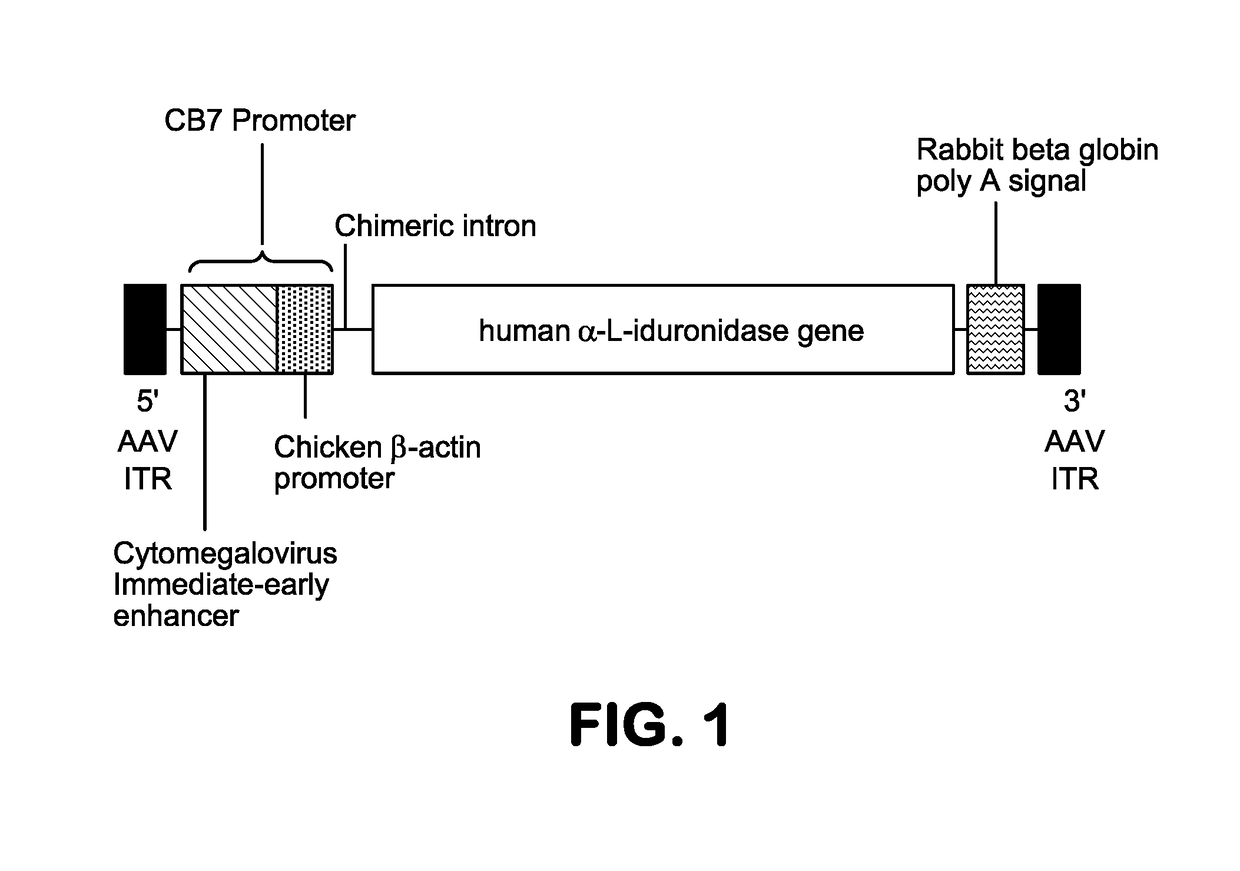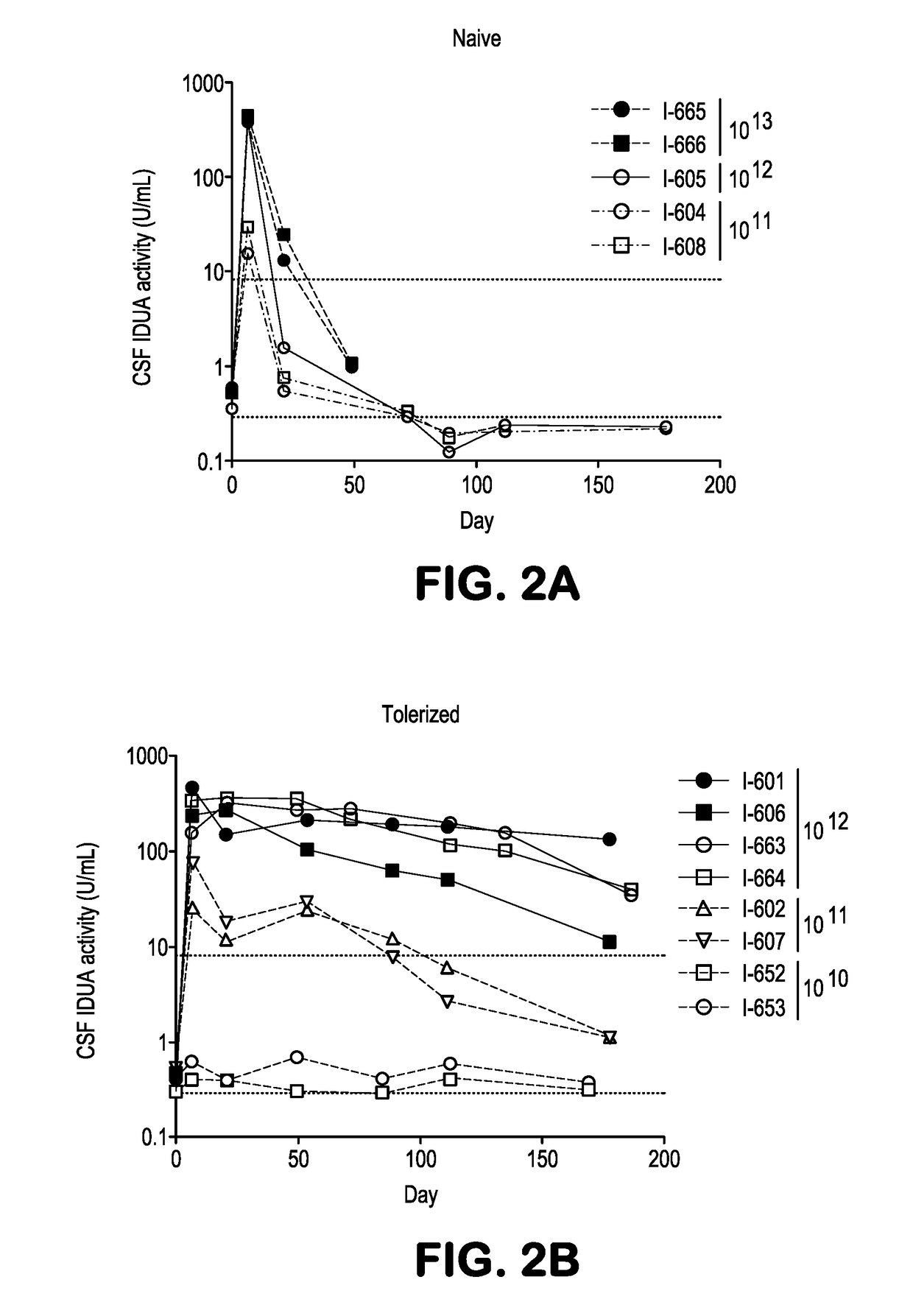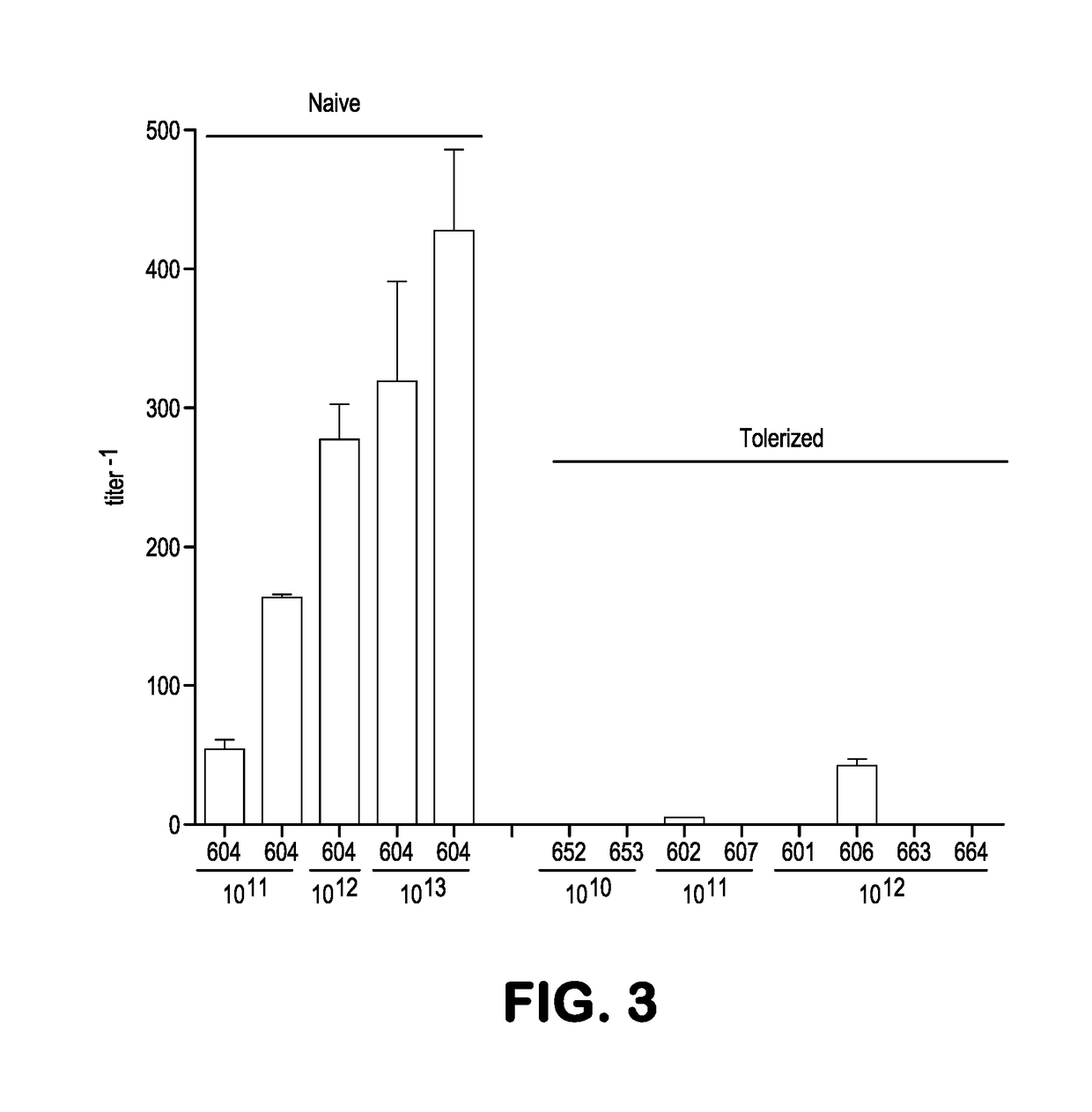Gene therapy for treating mucopolysaccharidosis type i
a gene therapy and mucopolysaccharidosis technology, applied in the field of gene therapy for treating mucopolysaccharidosis type i, can solve the problems of severe cognitive defects and mental retardation, interfering with cell, tissue and organ function, increasing cellular and organ damage, etc., to enhance the efficacy of raav9.idua, increase nucleated cell counts and anti-idua antibodies, and high csf wb
- Summary
- Abstract
- Description
- Claims
- Application Information
AI Technical Summary
Benefits of technology
Problems solved by technology
Method used
Image
Examples
example 1
for Treatment of Human Subjects
[0245]This Example relates to a gene therapy treatment for patients that have MPS I. In this example, the gene therapy vector, AAV9.CB7. hIDUA, a replication deficient adeno-associated viral vector 9 (AAV9) expressing a modified hIDUA gene encoding the wild-type hIDUA enzyme, is administered to the central nervous system (CNS) of the MPSI patients. Doses of the AAV vector are be injected directly into the CNS under general anesthesia. Efficacy of treatment is assessed using clinical measures of neurocognitive development and / or surrogate markers, including biomarkers, e.g., a decrease in pathogenic GAG and / or hexosaminidase concentration in the subject's CSF or serum, as described herein.
[0246]A. Gene Therapy Vector
[0247]An illustrative gene therapy vector, AAV9.CB.hIDUA, is described in Example 3. Expression from the transgene cassette is driven by a CB7 promoter, a hybrid between a CMV immediate early enhancer (C4) and the chicken beta actin promoter...
example 2
Systemic AAV Induces Tolerance to CNS Gene Therapy in MPS I Dogs and Nonhuman Primates
[0298]This example demonstrates in both dogs and nonhuman primates that liver directed gene transfer using an adeno-associated virus (AAV) vector in neonates induces a persistent state of immunological tolerance to the transgene, substantially improving the efficacy of subsequent vector administration targeting the central nervous system (CNS). This approach was applied to a canine model of the lysosomal storage disease mucopolysaccharidosis type 1 (MPS I), which is characterized by progressive CNS disease due to deficient activity of the enzyme α-1-iduronidase (IDUA). CNS targeted gene transfer using intrathecal AAV delivery in one-month-old MPS I dogs resulted in antibody induction to canine IDUA, which partially attenuated the improvement in brain lesions. MPS I dogs treated systemically in the first week of life with a vector expressing canine IDUA did not develop antibodies against the enzyme ...
example 3
of Transgene-Specific Immune Tolerance Enables Accurate Evaluation of a Human Gene Therapy in a Canine Disease Model
[0327]A. Materials and Methods
[0328]The vector is a non-replicating recombinant adeno-associated virus (AAV) vector of serotype 9 expressing human iduronidase (hIDUA). The AAV9 serotype allows for efficient expression of the hIDUA product in the CNS following IC administration.
[0329]1. Vector Production:
[0330]The AAV-hIDUA vector genome plasmid pAAV.CB7.CI.hIDUAco.RBG (p3032) is 7,165 bp in size. The vector genome derived from this plasmid is a single-stranded DNA genome with AAV2 derived ITRs flanking the hIDUA expression cassette. Expression from the transgene cassette is driven by a CB7 promoter, a hybrid between a CMV immediate early enhancer (C4) and the chicken beta actin promoter, while transcription from this promoter is enhanced by the presence of the chicken beta actin intron (CI). The polyA signal for the expression cassette is the RBG polyA. The plasmid was...
PUM
| Property | Measurement | Unit |
|---|---|---|
| Fraction | aaaaa | aaaaa |
| Fraction | aaaaa | aaaaa |
| Time | aaaaa | aaaaa |
Abstract
Description
Claims
Application Information
 Login to View More
Login to View More - R&D
- Intellectual Property
- Life Sciences
- Materials
- Tech Scout
- Unparalleled Data Quality
- Higher Quality Content
- 60% Fewer Hallucinations
Browse by: Latest US Patents, China's latest patents, Technical Efficacy Thesaurus, Application Domain, Technology Topic, Popular Technical Reports.
© 2025 PatSnap. All rights reserved.Legal|Privacy policy|Modern Slavery Act Transparency Statement|Sitemap|About US| Contact US: help@patsnap.com



